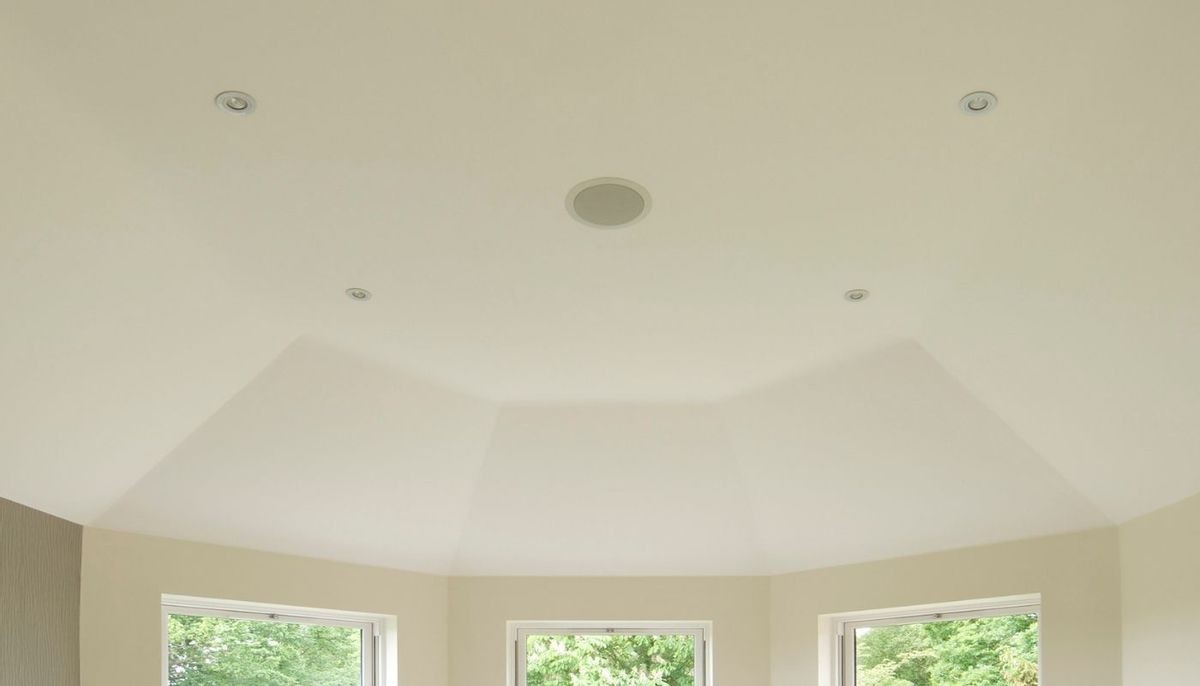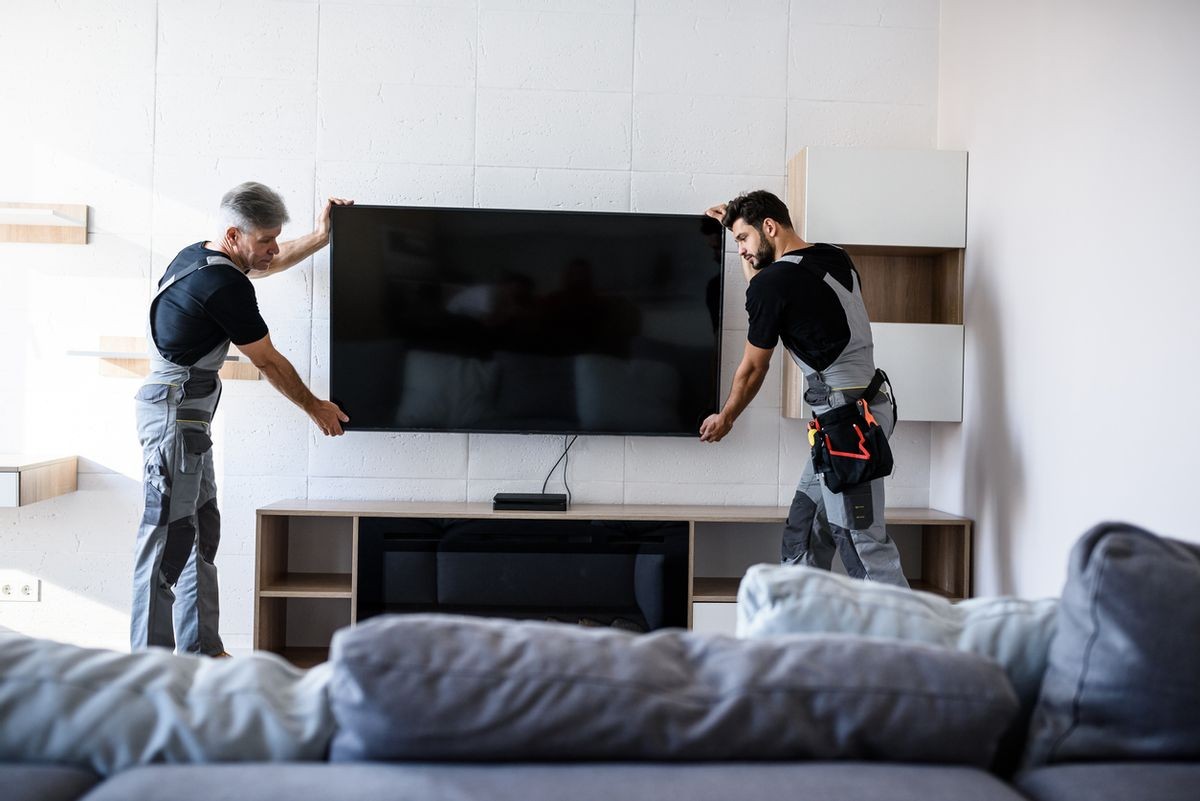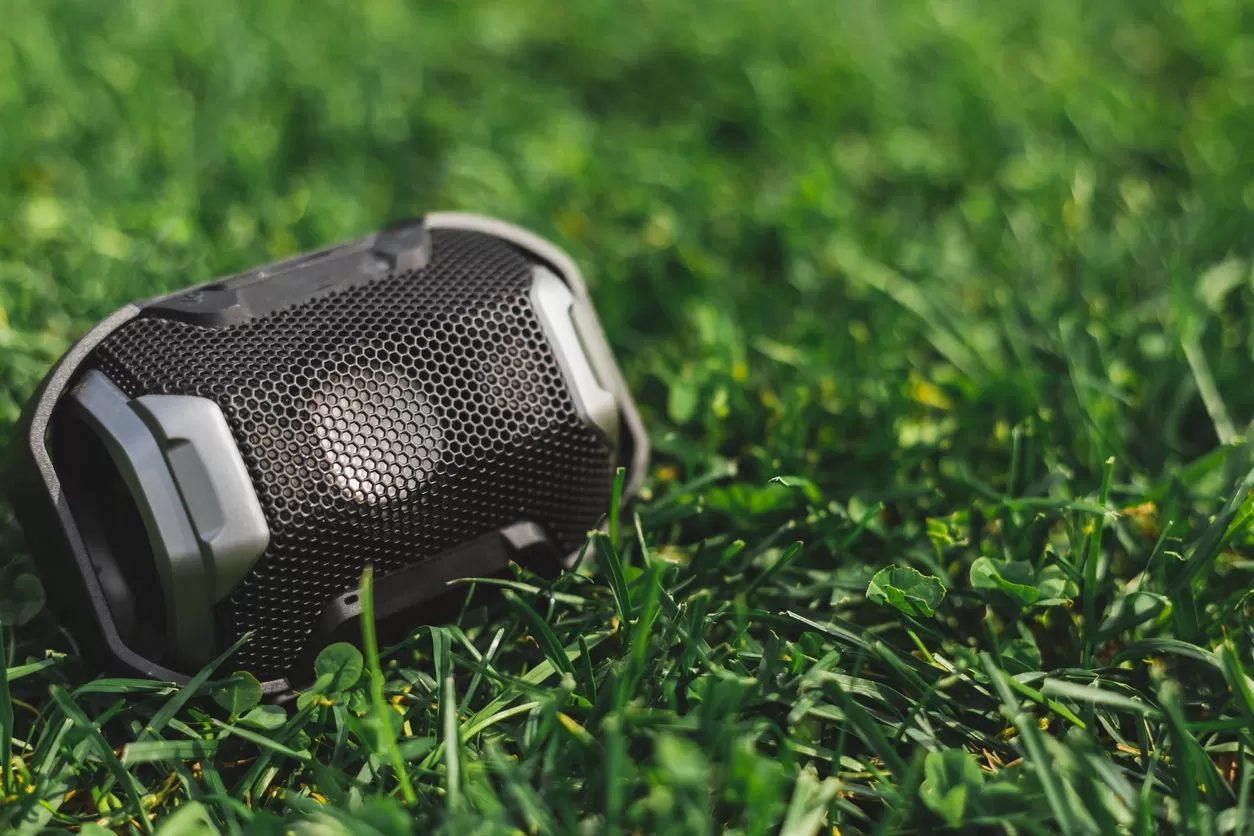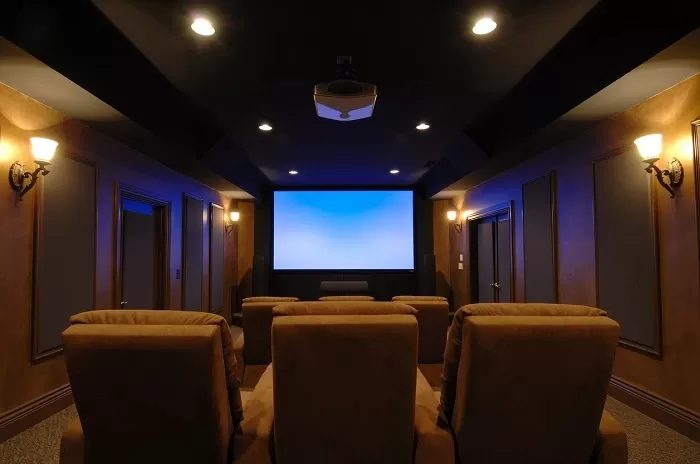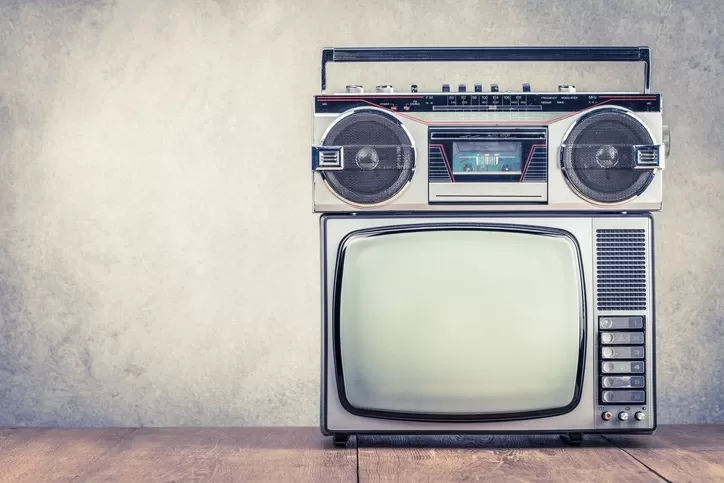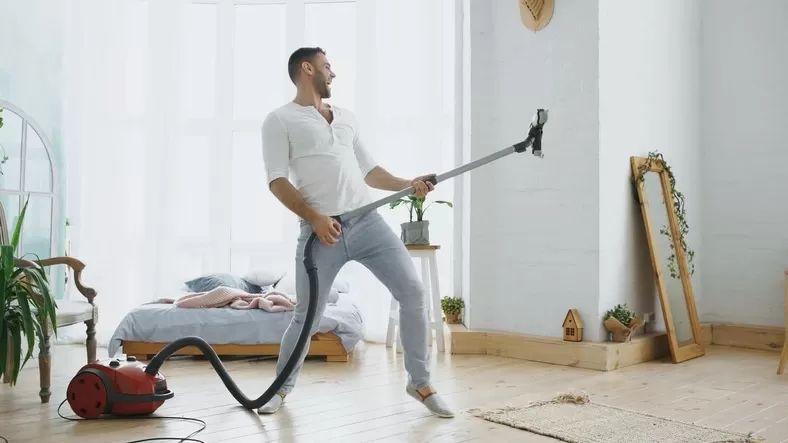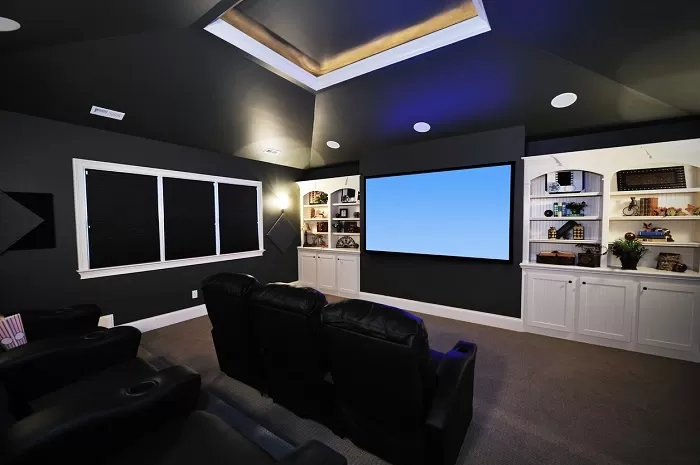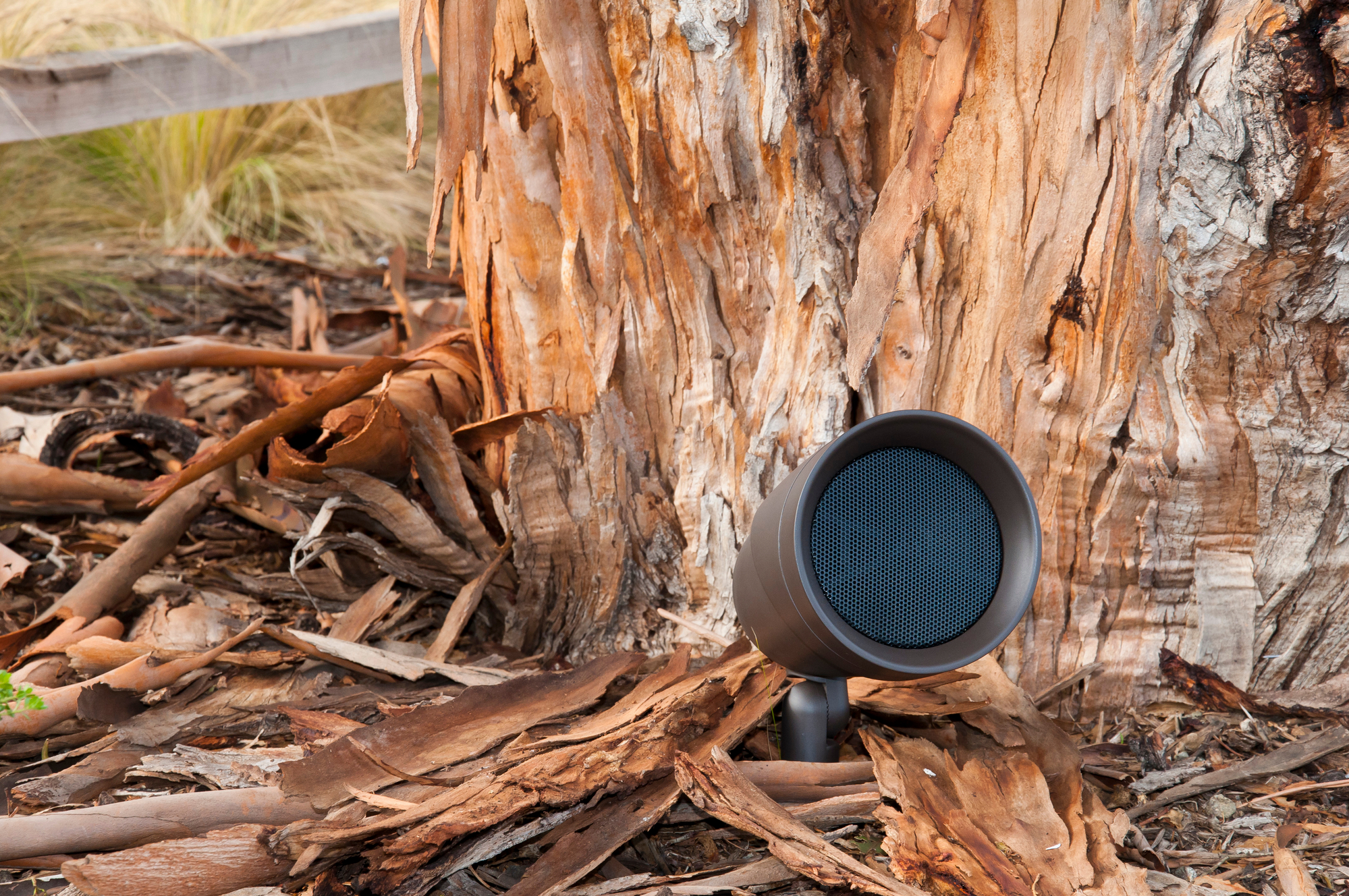In the Wall or the Ceiling?
One of the easiest ways to hide your audio is with in-wall or in-ceiling speakers. Both speakers are recessed into the sheetrock with a mounting bracket, but while the grilles are still noticeable, you can paint those the same color as the walls. And you don't have to worry about the wires since your installer will run them for you.
With in-ceiling speakers, you need to take care of which rooms you put them in since sound travels. So, if you have a young child, having in-ceiling speakers in the room above them might make it hard for them to stay asleep.
Pro Tip: Make sure to choose speakers with full enclosures to minimize sound reflections and keep your sound pure.
Cloak of Invisibility
Have you heard of invisible speakers? They work just like in-wall or in-ceiling speakers, except they don't have exposed grates. Instead, you plaster over invisible speakers, and they stay hidden entirely inside the sheetrock. But don't worry about the quality of your sound — these are designed with superior audio!
The beauty of invisible speakers is that you can also install them within recesses about the size of canned lights so that they blend in with your light fixtures. No matter how often your guests look around, they won't be able to find where the sound is coming from!
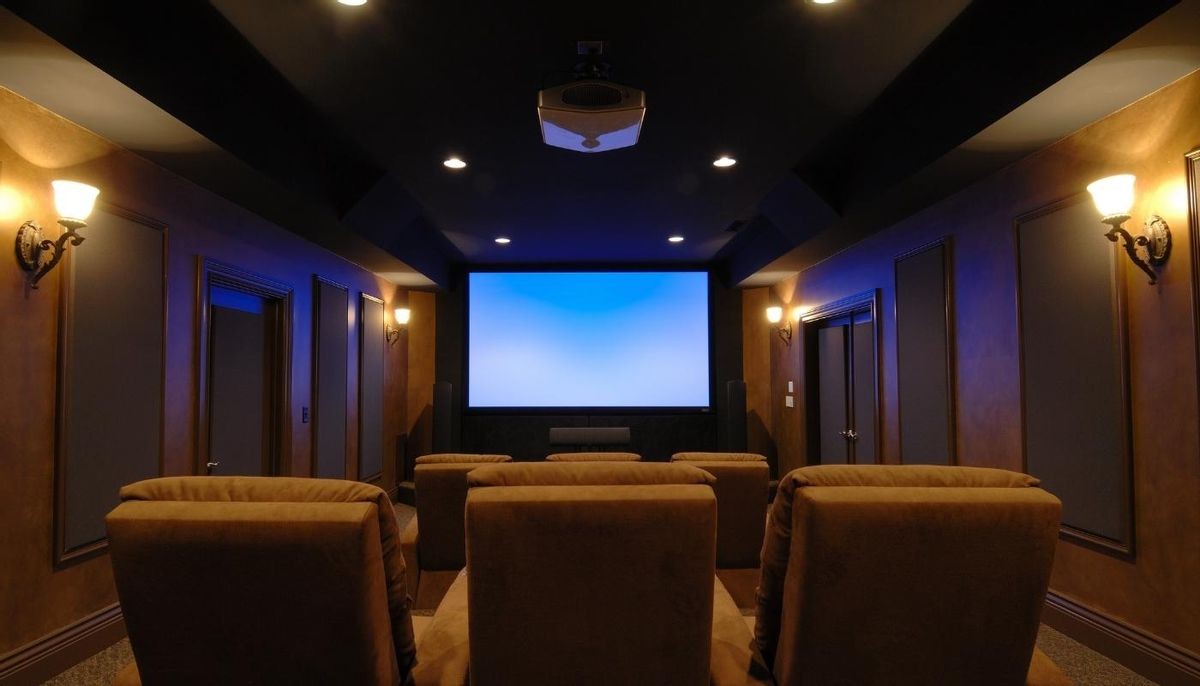

![5 Tips to Make Your Speaker Last a Lifetime [+1 Bonus!]](https://www.avdci.com/images/easyblog_articles/124/b2ap3_large_CI_Make-Your-Speakers-Last-A-Lifetime_Header.jpg)
